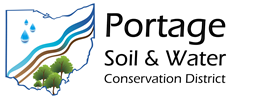Water & Habitat for Wildlife
Wildlife habitat is a combination of food, water, shelter, and space arranged to meet the needs of wildlife. Even a small yard can be landscaped to attract birds, butterflies, beneficial insects, and small animals. Native trees, shrubs, and other plants are especially beneficial to wildlife – providing high quality food at a time when it is most needed by wildlife.
Evaluating your current landscape is a great first-step to learning what improvements you can make to have a yard that is more attractive to wildlife. We have provided the following resources to help you know what to look for and how to enhance what you currently have. Oftentimes you can greatly improve the quality of your wildlife habitat with the addition of only a few key species.
The National Association of Conservation Districts factsheet, Backyard Conservation is linked below and is a great resource with lots of helpful tips for attracting a variety of wildlife species.
The Iowa State University publication, Bird Habitat is also linked below and was selected because of the helpful diagrams which effectively illustrate the importance of planting in layers. A well-layered landscape makes full use of the vertical space in your yard with large and small trees, shrubs, flowering plants, and grasses. Additionally, the planting list includes plants that are native to Ohio, so it is a terrific all-around resource for attracting birds!
Also linked below is an Ohio Division of Wildlife publication, Attracting Birds in Ohio. This is an especially good resource if you want to add nest boxes. Included are DIY diagrams with dimensions and building instructions. Even if DIY is not your thing, the illustrations with dimensions will provide guidance in what to look for when sourcing these products.
